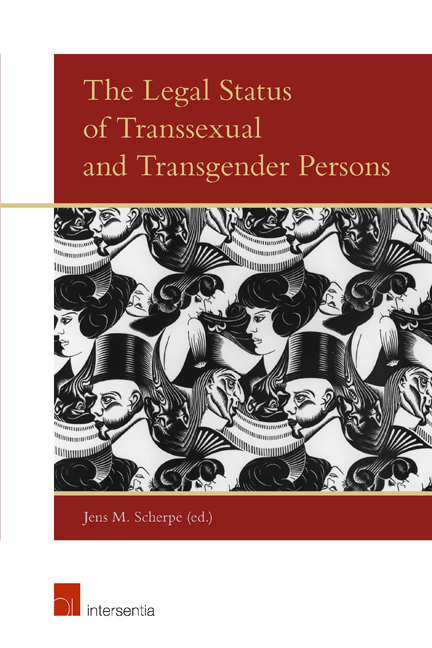Book contents
- Frontmatter
- Dedication
- Preface
- Contents
- List of Contributors
- Introduction
- PART I MEDICAL/PSYCHOLOGICAL VIEWS
- PART II CHRISTIAN VIEWS
- Transgenderism and the Christian Church: An Overview
- Metamorphosis and (Trans) Migrations: Spiritual Dimensions of Gender Transition
- PART III LEGAL VIEWS
- Europe
- Asia
- Australia and New Zealand
- North and South America
- PART IV CONCLUSION
Metamorphosis and (Trans) Migrations: Spiritual Dimensions of Gender Transition
from PART II - CHRISTIAN VIEWS
Published online by Cambridge University Press: 28 November 2017
- Frontmatter
- Dedication
- Preface
- Contents
- List of Contributors
- Introduction
- PART I MEDICAL/PSYCHOLOGICAL VIEWS
- PART II CHRISTIAN VIEWS
- Transgenderism and the Christian Church: An Overview
- Metamorphosis and (Trans) Migrations: Spiritual Dimensions of Gender Transition
- PART III LEGAL VIEWS
- Europe
- Asia
- Australia and New Zealand
- North and South America
- PART IV CONCLUSION
Summary
INTRODUCTION
In this chapter I explore two images to illuminate some spiritual dimensions of gender transition. By gender transition I mean the rite of passage by which a transgender person exchanges one mode of gendered living for another. Terms like ‘female-to-male’, ‘male-to-female’, or the notion of exchanging either a male or female presentation for a transgender or gender neutral one, are not simply crude, imprecise, and incapable of capturing the lived reality of that experience. They are also misleading. For example, transgender people often protest that they have never had a sense of belonging to their assigned gender, and that the ‘journey’, such as it was, hardly constituted a watershed. Indeed, they are more likely to view transition as the means to confirm and facilitate the recognition of their gender identity, which is an enduring aspect of their self-understanding, and not something that has been altered or amended by the process of transition.
Nevertheless, some changes will have occurred. For example, changing one name to match one's own internal sense of gender identity, which might seem a minimal step, can feel momentous to some people. (At the Conference in Hong Kong it was explained that name change is not especially significant for local transgender people as Chinese first names tend to be gender neutral.) Transition may also involve what others may assume to be ‘cross-gendered’ dressing and behaviours, and so-called cosmetic procedures, such as electrolysis, or more extensive interventions, like hormone therapy and surgery. In some transgender people's narratives, these and other features of gender transition are often presented as life-changing – and frequently as life-saving.
They can also be portrayed as spiritually significant, especially in contrast to the earlier stages of the narrative, where the person is often oppressed by a negative spirituality associated with a sense of unease, or potential conflict with their environment, lack of self-awareness, denial, low self-esteem, or with feelings of entrapment. At some stage, though, spirituality can begin to assume a positive character with the emergence of an overwhelming need to challenge and overcome these limitations, however great a struggle that might entail, in order to be true to one's own sense of gender identity.
- Type
- Chapter
- Information
- The Legal Status of Transsexual and Transgender Persons , pp. 77 - 100Publisher: IntersentiaPrint publication year: 2015



